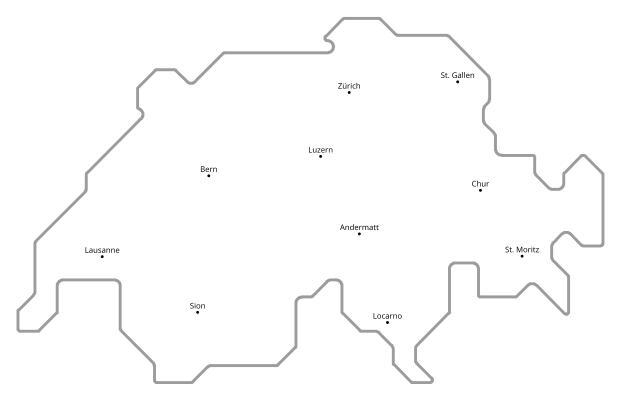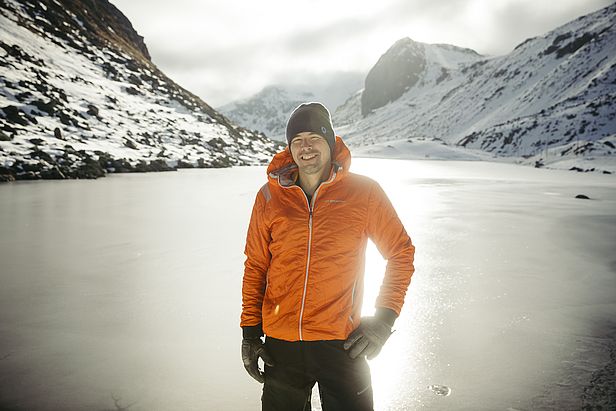12.12.2020 | Observer portraits
-
Married with two children (5 and 7 years old)
-
A mountain guide in winter, and warden of the refuge Capanna da l'Albigna in Val Bregaglia in summertime
-
SLF observer since 2009
As an observer, what is it exactly that you report?
I don't have a fixed measuring site, but record actual conditions in the field. Whenever working in the mountains as a guide, I'm constantly observing the local conditions and gathering impressions. I examine the composition or structure of the snowpack and its bonding, record the quantities of fresh snow, and localise fresh snowdrift accumulations. This also entails looking out for warning signs, such as cracks in the snowpack, as well as whumpfing sounds, and for naturally triggered avalanches or ones released by snow sport participants. Based on all of these factors I evaluate whether the avalanche situation is favourable or unfavourable, and enter all the information in the SLFPro online platform for avalanche experts, which takes around 5 to 10 minutes.
How did you become an SLF observer?
Lukas Dürr of the avalanche warning system asked me if I would like to join the team. We trained as mountain guides together in 2003 and keep in touch socially as well.
What do you like about this task?
I'm pleased that I can contribute to the accuracy and precision of the avalanche bulletin, and to its continuous improvement. The role offers me personal benefits as well. I now observe the snow conditions in the field much more closely and give greater consideration to the current situation.
Which aspects are less enjoyable/do you find tiresome?
There's nothing that fits that description. For me, the role of observer is not like work – it's more akin to packing a rucksack or making coffee. It's just another routine, but one that entails filling in a form afterwards.
What does it mean to you to be an observer?
There's no prestige involved, but it's great to be playing a part in the production of a good bulletin. The avalanche bulletin is highly regarded in Switzerland. It also pleases me that such substantial resources are invested in this and other valuable tools of the SLF.
How easy is it to combine this task with your other work?
As a general rule it's not a problem. On the other hand, entering my data in SLFPro can prove rather difficult and frantic when I'm taking part in a training course. Internet reception is usually not an issue – coverage is very good in the places I visit as a mountain guide.
What has been your most memorable experience relating to snow and avalanches?
I have been caught up in an avalanche, but luckily without being completely buried. During a ski tour, the last person in our group triggered a snow slab on the slope above us. But we had taken up a good position – on a secure island, so to speak. I had already taken a good look at the terrain and chosen this safe place, and was waiting there for the rest of the group. The avalanche swept past, extremely close to us. The experience taught me that a good understanding of the terrain alone is no guarantee of safety. It's essential to remain attentive as well.
What is the personal connection between you and snow?
I've been outdoors in the snow all my life. I learned to ski at an early age, and my father was a cableway worker. My close affinity with snow also originates in part from working as a snow sport instructor, youth leader with the Swiss Alpine Club, and mountain expert in the army. Becoming a mountain guide was simply the logical next step.
How do you like to spend your evenings/leisure time?
My profession is also my hobby, so I don't need much else. When I have free time, I enjoy ski touring with my wife, or skiing on-piste with the children. Since I live in the mountains, I have a more or less regular job. During the winter season I'm on the road on only three or four occasions, for a week at a time.
Which is your favourite place in the world?
For me, mountain regions in general are always appealing – I can't name a favourite place.
And your favourite season?
Autumn and winter are my favourites. Autumn is usually still a great time for climbing, and full of colour. And wintertime, of course, because of the ski tours. It transforms the mountains into wild domains.
Is there anything you couldn't live without?
I would very much miss skiing and climbing.
The SLF is celebrating the 75th anniversary of the avalanche bulletin. What does that mean to you?
Switzerland has a long history of engaging in snow and avalanche research. The SLF has been among the pioneers and chalked up numerous firsts in Davos. I hope the tradition continues.

